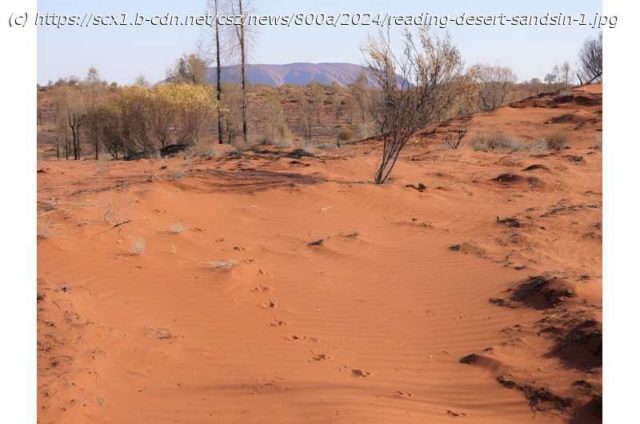As animals move across the desert, they leave tracks, diggings and droppings. For skilled trackers, reading these signs is like watching a movie. A story of who was there and what they were doing unfolds in front of them.
As animals move across the desert, they leave tracks, diggings and droppings. For skilled trackers, reading these signs is like watching a movie. A story of who was there and what they were doing unfolds in front of them.
In this way, many Indigenous Australians know where the goannas (jalangardi in Yawuru) are fat and abundant, when bilby (jitartu in Karajarri) burrows are occupied, and whether the bush turkeys (parrkara in Karajarri) have arrived to take advantage of a freshly burnt patch.
For many years, scientists have been working with Indigenous people in the desert to record these observations in a systematic way. Taking a standard approach enables comparisons between data from different people, times and places, so trends can be detected.
Our new research collates almost 49,000 animal detections during 15,000 surveys at more than 5,300 sites, since 1982. This unique data set reveals new information about desert species. Monitoring animal numbers, locations and responses to environmental change is vital for guiding efforts to support their survival.
It’s not always easy to see animals in the desert. Most are nocturnal, secretive, and spend much of their time underground. Numbers can fluctuate widely, dwindling during droughts and booming after rain.
This means we need to collect a lot of data—over a long time and over a vast area—to tell what is going on.
Fortunately, Indigenous Australians continue to inhabit and look after desert landscapes using deep knowledge of their Country and exceptional observational skills. Our deserts contain one of the largest networks of Indigenous-managed land in the world.
The Arid Zone Monitoring Project combines Traditional ecological knowledge and tracking skills with scientific analysis. Indigenous rangers and Traditional Owners from 33 different Indigenous desert groups are involved, along with government agencies, non-government organizations and independent scientists. It’s one of Australia’s largest wildlife monitoring endeavors, spanning nearly half of the country.
The standard approach is to search a 2-hectare area for signs of animals with at least two people for 20 minutes.
Домой
United States
USA — IT Reading desert sands—Indigenous wildlife tracking skills underpin vast monitoring project






